It's a highly superior clutch of books this month around—plus a double review of the new Vonnegut…

by Victoria Silverwolf
Sophomore Efforts
By coincidence, the last two books I read were both the second novels to be published by their authors. Otherwise, they are as different as they could be.
The Null-Frequency Impulser, by James Nelson Coleman
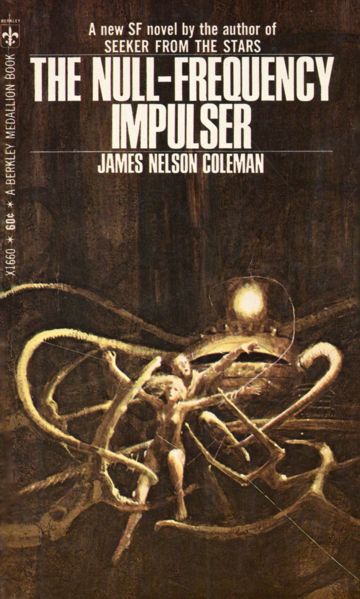
Cover art by John Schoenherr.
Coleman's first book was something called Seeker From the Stars. I haven't read it, so I can't comment. In fact, I was completely unfamiliar with this author, so I asked my contacts in fandom and the publishing industry about him. I turned up a couple of interesting facts.
Firstly, he's one of the few Black science fiction writers. (The most notable is, of course, the great Samuel R. Delany.) That's a good thing for the field. The more variety of writers, the better the fiction.
Secondly, he's currently in jail for burglary. It seems that he's taken up writing while incarcerated. That seems like a decent path to rehabilitation, so let's wish him good luck while paying his debt to society.
But is the book any good? Let's find out.
At some time in the future, humanity has reached the far reaches of the solar system. However, a conglomeration of business interests known as the Five Companies has put a stop to further development of space science, unless they control it. They're so powerful that they have their own secret police. Not even the World Government or the Space Patrol can keep them from crippling research.
Our protagonist is Catherine Rogers. She is part of a private space research group that dares to defy the Five Companies. Trouble starts when a scientist shows up at their headquarters, shot by the secret police. Just before dying, he gives Catherine and her colleagues a book and a key to a hidden cache of highly advanced technology brought from another world.
We quickly find out that two aliens in the form of glowing spheres are on Earth. One of them is insanely evil. He kidnapped the other, who is essentially the queen bee of her species. He intends to mate with her against her will, forcing her to produce one hundred million offspring (!) who will be raised to be as wicked as himself.
He wants to feed off the life force of human beings, and teach his children to do the same, wiping out humanity. Complicating matters is the fact that the evil alien shares his mind with one of the leaders of the secret police, who wants to get his hands on the advanced technology.
This all happens very early in the book, and we've got a long way to go. Suffice to say that Catherine and her friends work with the good alien, who has enormous psychic powers, to defeat the bad one.
The author's writing style isn't very sophisticated, sad to say, nor is the plot. Much of the time I imagined this story as a comic book. On the good side, the pace keeps getting faster and faster. By the end, it makes Keith Laumer look like Henry James.
I also appreciate the fact that the heroes are of mixed races, and a large number of them are women. All in all, however, I have to confess that this is a disappointing work.
Two stars.
The Place of Sapphires, by Florence Engel Randall.

Uncredited cover art.
Randall's first novel was called Hedgerow. I haven't read that one either, but apparently it's a Gothic Romance without supernatural elements.
Unlike Coleman, I'm familiar with this author. She had two excellent stories published in Fantastic a few years ago.
Will she be as adept at a longer length? Let's take a look.
An automobile accident claims the lives of the parents of two sisters. Elizabeth (twenty-four years old) escapes without a scratch, but Gabrielle (nineteen) is severely injured. The two young women move into a house owned by the great-aunt of a doctor who cared for Gabrielle during her long and painful recovery.
The house is located on an island off the coast of New England, the perfect setting for a Gothic Romance. Elizabeth and the doctor fall in love, giving us the other mandatory element for this genre.
The first half of the book is narrated by Gabrielle. On the very first page she feels the presence of Alarice, a woman who lived in the house long ago. (She's the dead sister of the great-aunt. Throughout the book, there's a strong parallel between the two pairs of sisters, including a love triangle.)
It's obvious from the start that Gabrielle is mentally and emotionally unstable, after her traumatic experience, so it's not always clear what's real and what's not. The second half of the book is narrated by Elizabeth, who gives us a very different perspective on events, including the tragic accident.
I haven't mentioned a third narrator, who shows up only a few pages from the end, adding a genuinely chilling touch.
This is a beautifully written book, with great psychological insight into its characters. Besides gorgeous language that makes me want to read it out loud, it has a plot as intricately woven as a spider web. We witness the same things happen from different viewpoints, completely changing what we thought we knew.
Five stars.

by Brian Collins
This month's Ace Double is a very good one for both Fritz Leiber fans and readers in general. The quality packed into this Double is unsurprising, though, since it is all reprints. There's the short collection Night Monsters, which contains four stories that all run in the horror vein. Three of these stories were previously printed in Fantastic, and so Victoria covered them some years ago. The other half is The Green Millennium, one of Leiber's more overlooked novels, first published in 1953 and not having seen print in the U.S. in about fifteen years.
Ace Double 30300
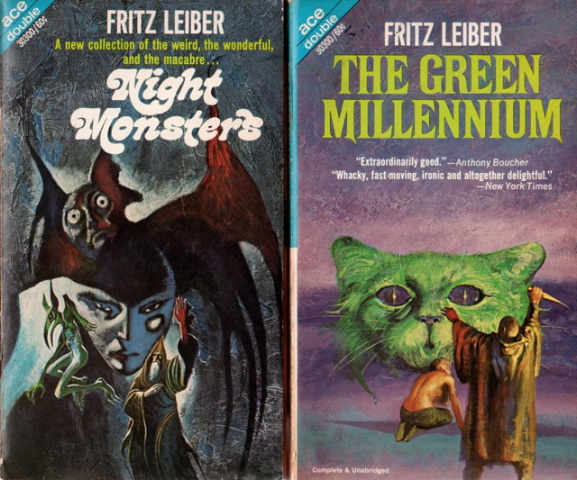
Cover art by Jack Gaughan and John Schoenherr.
The Black Gondolier, by Fritz Leiber
The longest story here is also the best, at least in terms of the sheer beauty of Leiber's prose. It's Southern California in the early '60s, and the narrator is recounting the strange ramblings of a friend of his who would disappear under mysterious circumstances. Said friend believes that not only is oil a corrupting force, but that oil might somehow be alive. The supernatural is never seen but is strongly alluded to, in passages so evocative, so oppressive, that they compare with Conrad's Heart of Darkness. The plot itself is rather structureless, but this doesn't matter because Leiber is so good at chronicling modern horrors such as industry and the urban landscape. I lived in California (in Pasadena) for a short time, and I'll be sure never to return.
Five stars.
Midnight in the Mirror World, by Fritz Leiber
Another contender for best in the collection is a more personal, more melancholy story. A middle-aged man, a chess-player, astronomer, and divorcee who reads somewhat like a stand-in for Leiber, sees a silhouetted figure behind him in the doubled mirrors he sees going up and down the stairs every night. Without giving away the ending, the apparition may be the ghost of a theatre actress he had met by chance who had committed suicide not long after their encounter. The man, in an attack of conscience, is confronted with a memory he had suppressed, of a person he had deeply wronged, though he didn't know it at the time. It's a ghost story, a striking portrait of guilt, and in a strange way, a love story.
Five stars.
I'm Looking for "Jeff", by Fritz Leiber
As an unintended companion to the previous story, this one is interesting. It also features a ghostly woman who has been wronged, albeit the crime committed upon her is much worse. We're led to believe at first that this woman is simply a temptress, but while she may creep up on the unsuspecting male lead, she is not a totally malicious specter. "I'm Looking for 'Jeff'" is about a decade older than the other stories, and it certainly shows a restraint (given the horrific crime at the center) that Leiber would probably not show if he had written it today. My one real problem is the ending, which is an expositional monologue from a third party that explains the twist, rather than Leiber showing us what happened.
Four stars.
The Casket-Demon, by Fritz Leiber
The last and shortest is also the most lighthearted; it's what you might call a horror-comedy. An actress is quite literally fading (her body is becoming more transparent) as her popularity is on the decline, so she resorts to a very old family ritual that might make her famous again—at a price. The satire is cute, although I think Leiber tackled something similar but better and more seriously in "The Girl with the Hungry Eyes." I'm also not sure about those rhyming couplets. It's fine, but ultimately minor.
Three stars.
The Green Millennium, by Fritz Leiber
Phil Gish is aimless and unemployed, but his life quickly gets turned upside down when he meets a green cat he takes an immediate liking to. He calls the cat Lucky, and like Lovecraft, who liked taking care of strays, he thinks of the animal as his own—only for Lucky to run off. Man gets cat, man loses cat, man goes looking for cat. This is the skeleton on which the book's plot is built, but it balloons into something much weirder and more convoluted.
The future America of The Green Millennium is dystopic, but not in ways we now take as obvious. Robots have become normalized, taking away much of human labor, and the people themselves are largely hedonists desperate for stimulation—not even for pleasure itself but more to fight off boredom. Despite being first published in 1953, it reads like something written in the past few years—in the wake of the New Wave and even something like Pynchon's The Crying of Lot 49. Certainly it could not have been serialized in the magazines of the time, what with the explicit references to sex and drug use.
The plot, at its core, is simple, but Leiber introduces a colorful array of characters, all of whom want Lucky as much as Phil does. These characters include, but are not limited to, a husband-wife wrestling duo, an analyst who sounds like he himself could use an analyst, a woman with prosthetic legs that hide what seem to be hooves for feet, a pack of corporate higher-ups who may as well be mobsters, actual mobsters, and a few others I have not mentioned. The green cat might be an alien, or a mutant, or a weapon devised by the Soviets, I won't say which.
I might sound inebriated as I'm trying to explain all this, but let me assure you that I haven't smoked or ingested marijuana in five months!
Leiber is a mixed bag when it comes to comedy: he can be pretty funny, but he can also write The Wanderer. The Green Millennium is a madcap SF comedy that was written at a time (the early '50s) when Leiber could seemingly do no wrong, and it demonstrates his keen understanding of things that haunt the modern American. Most importantly, it's just a lot of fun.
Four stars.

by Gideon Marcus
Seahorse in the Sky, by Edmund Cooper

On a routine flight from Stockholm to London, sixteen travellers (eight women and eight men) with no connection to each other, find themselves whisked to another world. Their new environs are suggestive of nothing so much as a zoo habitat designed to be reminiscent of home. To wit: a strip of highway flanked by a supermarket and a hotel, complete with electricity and running water. Two automobiles sans engines. A few workshops. A nightly replenished supply of booze, groceries, and tools.
Russell Graheme, M.P., quickly takes charge of the unwilling emigrants, organizing exploration parties. Soon, contact is made with a medievalist enclave, a Stone Age encampment…and what appear to be flocks of fairies.
What is this world? Who brought them there? And to what end? Those are the key riddles answered in this terrific little new book.
It's sort of a cross between Cooper's book Transit (in which five humans are transported to an extraterrestrial island) and Philip José Farmer's "Riverworld" series (in which everyone who ever lived is transported, along with his/her culture, to the banks of an extraterrestrial world-river) with a touch of the whimsy of L. Sprague de Camp (viz. The Incomplete Enchanter). It reads extremely quickly, and what with the short chapters and quick running time, you'll be done with the novel (novella?) before you know it.
What really engaged me, beyond the tight writing and fine characterization, was the central message of hope throughout the book. In "Riverworld", the various cultures who find themselves alongside each other in the hereafter almost immediately form belligerent statelets; war is the constant in Farmer's series. But in Seahorse, it's all about making peaceful contact, working together, having a productive goal. There's no Lord of the Flies to this story (though it is not unmitigatedly happy, either). Cooper clearly has a positive view of humanity, or at least wants to inspire us toward his idealistic vision. Count me in.
Five stars.
Contrast this upbeat book with the other one I read recently…
Slaughterhouse Five, by Kurt Vonnegut Jr.
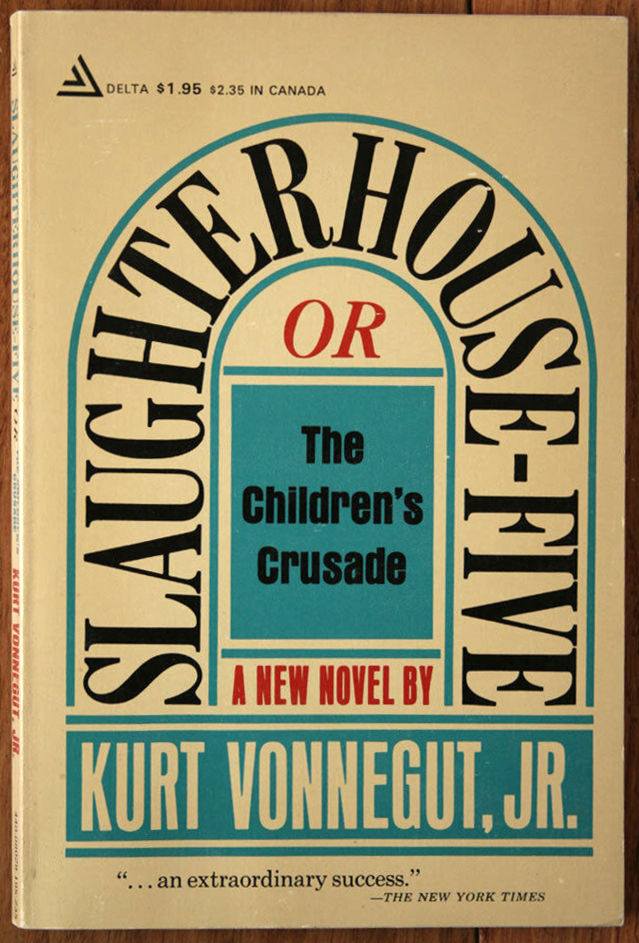
By page 100, Gideon determined that Slaughterhouse Five is not a book one enjoys, but rather experiences.
Two thirds of the way through the book, Gideon realized he'd been hoodwinked. Slaughterhouse Five is not science fiction at all, but rather the author's attempt to convey his experiences as a POW in Nazi Germany during the War, culminating in his presence at the firebombing of Dresden (now sited in East Germany). The SFnal wrapping, in which Billy Pilgrim is abducted by 4D aliens who unstick him in time and incarcerate him in an extraterrestrial zoo, seems there mostly to get eyes on the book. Or maybe to maintain a certain detachment from the material by changing the genre from "memoir."
For the same reason Billy Pilgrim, the eternal schlemiel, gets to be the closest thing the book has to a hero rather than the author, himself. The only way Vonnegut could work through his battle fatigue and War-derived ennui was to make the protagonist as hopeless and hapless as possible, to reflect the flannel-wrapped blinders through which the author now sees the world. To Vonnegut, Earth is a pathetic stage on which man inflicts indignity on himself and then on others. Then they die. So it goes.
On or about page 81, Gideon got a little tired of the fairy-tale language Vonnegut employs. It worked in Harrison Bergeron, but it's a bit of a one-trick pony.
Somewhere along the line, Gideon figured that the inclusion of the starlet, Miss Montana (who exists to provide someone besides the enormous Mrs. Pilgrim for Billy to stick his hefty wang into) was so that, in addition to appealing to SF fans, the book would appeal to horny SF fans. And horny readers in general. And because S.E.X. s.e.l.l.s.
Kilgore Trout, if he existed, would probably be reprinted these days in Amazing.
About a third of the way in, Gideon determined that he would write the review of Slaughterhouse Five in the style of Slaughterhouse Five.
Whatever the book is not, it is, at the very least, a memorable account of the author's feelings toward and memories of those dark last months of the war. It is a poignant counterpoint to all the jingoistic WW2 films that have come out this decade, and perhaps a more suitable epitaph for the millions who died in that conflict. So it goes.
Four stars.

by Cora Buhlert
War is hell: Slaughterhouse Five by Kurt Vonnegut
Last month, thousands of people gathered in Dresden to remember the victims of the Allied bombings in the night from February 13 to 14, 1945, the night from Shrove Tuesday to Ash Wednesday and never was a day more aptly named. These memorial gatherings happen every year and while the number of East German officials and politicians attending and the degree of belligerence in their speeches waxes and wanes with the greater political situation (East German officials like using the Dresden bombings for propaganda purposes as an example of the infamy of the West), one thing that remains constant is the number of Dresdeners who come to remember the dead and the nigh total destruction of their city.


I have never seen Dresden before 1945, though my grandmother who grew up in the area told me it was a beautiful city and how much she missed attending performances at the striking Semper opera house, which was largely destroyed by the bombings and is in the process of being rebuilt (The proposed completion date is 1985). However, I have visited the modern Dresden with its constant construction activity and incongruous mix of burned out ruins, historical buildings in various stages of reconstruction and newly constructed modernist office and apartment blocks and could keenly feel what was lost.

I also know survivors of the Dresden bombings such as my university classmate Norbert who witnessed Dresden burning as teenager evacuated to the countryside and who – much like Kurt Vonnegut – was forced to help with the clean-up work and body recovery and wrote a harrowing account of his experiences for the university literary magazine.
Of course, Dresden was not the only German city bombed. Every bigger German city has its own Dresden, that night when entire neighbourhoods were wiped out and thousands of people, the vast majority of them civilians, were killed. For my hometown of Bremen, the night was the night of August 18, 1944, when Allied bombers destroyed the Walle neighbourhood next to Bremen harbour (while miraculously missing most of the harbour itself, similar to how the bombing of Dresden miraculously missed the industrial plants on the outskirts of the city). My grandfather, a retired sea captain, lived in the Walle neighbourhood. He was one of the lucky ones and survived, though his home in a housing estate for retired seafarers was destroyed. I remember sifting through the still smoking rubble of Grandpa's little house with my Mom the next day, looking for anything that might have survived the bombs and the firestorm and finding only two bronze buddha statues that Grandpa had brought back from Thailand. These two buddhas now stand guard in my living room, the war damage still visible. Meanwhile, the street where Grandpa once lived no longer exists on modern city maps at all.

This is the perspective from which I read Kurt Vonnegut's latest novel Slaughterhouse Five, which uses science fiction as a vehicle for Vonnegut to describe his experiences as a prisoner of war who survived the bombing of Dresden and – like my classmate Norbert – never forgot what he saw that night and in the days that followed.
The result, much like the contemporary Dresden with the burned out ruin of the Church of Our Lady overlooking a parking lot and a hyper-modern restaurant and entertainment complex sitting directly opposite the newly restored Baroque Zwinger palace, is jarring and incongruous. Vonnegut's protagonist is Billy Pilgrim, an American everyman whose suburban postwar life is disrupted when he is abducted by aliens and becomes unstuck in time, forced to revisit the bombing of Dresden over and over and over again.





Slaughterhouse Five is not so much a novel, it is a metaphor for the trauma of war, a trauma that still hasn't subsided even twenty-four years later but that keep rearing its ugly head again and again. Many veterans report having flashbacks to particularly traumatic experiences during the war – any war. But while those flashbacks are purely psychological, poor Billy Pilgrim physically travels back in time to the worst night of his life over and over again.
Barely a blip on the radar
The bombings of World War II loom large in the collective memory of people in Germany and the rest of Europe, yet they are comparatively rarely addressed in contemporary German literature. Der Untergang (The End: Hamburg) by Hans Erich Nossack from 1948, Zeit zu leben und Zeit zu sterben (A Time to Love and a Time to Die) by Erich Maria Remarque (who was not even in Germany, but sitting high and dry in Switzerland during WWII) from 1954 and Vergeltung (Retaliation) by Gert Ledig from 1956 are some of the very few examples. It's not as if World War II plays no role in German literature at all, because we have dozens of war novels. However, these are all tales about the experiences of soldiers on the frontline, not about the civilians getting bombed to smithereens back home. Most likely, this is because war novels focus on the experiences of men (and note that both Slaughterhouse Five and Remarque's A Time to Love and a Time to Die focus on soldiers experiencing bombings and air raids) and the experiences of men are deemed important. Meanwhile, the people who suffered and died during the bombing nights of World War II were mainly women, children, old people, sick people, prisoners of war, concentration camp prisoners and forced labourers and their experiences are not deemed nearly as relevant.


Considering how utterly destructive the bombing of Dresden was, it's notable that it is barely a blip on the radar of German literature in both East and West. Erich Kästner's memoir Als ich ein kleiner Junge war (When I was a little boy) touches on the bombing of Dresden, where Kästner grew up, though the book is not about the bombing itself, which Kästner did not experience first-hand, because he was living in Berlin at the time. And for the twentieth anniversary of the Dresden bombings, Ulrike Meinhof, one of the brightest lights of West German journalism, penned a scathing article for the leftwing magazine Konkret, condemning Winston Churchill and Royal Air Force commander Arthur Harris for ordering the attack on Dresden under false pretences. "Was Winston Churchill a war criminal?" the cover of the respective issue of Konkret asked, while quite a lot of readers wondered why this was even a question.


So should Slaughterhouse Five, a work by an American author, albeit one who witnessed the bombing of Dresden first-hand, become the definitive account of the destruction of Dresden and of the bombing nights of World War II in general? I hope not, because I want to read more accounts by German civilians about the bombings of World War II. Nonetheless, I'm glad that Slaughterhouse Five exists, as an account about the horrors of war by one who has seen them. I'm also glad that this novel was published in the US, because too many Americans still consider the bombings of cities and civilians during World War II justified. Maybe Slaughterhouse Five will make some of them reconsider, especially since – as I said above – it wasn't just Dresden that was destroyed by bombing. It was also Hiroshima, Nagasaki, Rotterdam, Coventry, Guernica, Hamburg and right now, it's Hanoi. And the next generation's Billy Pilgrim is currently locked up in a bamboo cage in the Vietnamese jungle somewhere, watching the flames over Hanoi turn the sky blood red.
Not a pleasant book at all, but an important one. Four and a half stars.
A Tale of Two Wizards: The Face in the Frost by John Bellairs

And now for something much more pleasant. For after a difficult book like Slaughterhouse Five, you need a palate cleanser. Luckily, I found the perfect palate cleanser in The Face in the Frost by John Bellairs, a young American writer currently living in Britain. The Face in the Frost is thirty-year-old Bellairs' third book and his first foray in the fantasy genre.

The novel starts off with a prologue that informs us that this is a book about wizards – just in case readers of Bellairs' previous two books, collections of Catholic humour pieces, are confused – and then introduces us to the setting, two adjacent kingdoms known only as the North and the South Kingdom. Such prologues can be dry and boring, but Bellairs' whimsical humour, which is on display throughout the book, makes them fun to read.
Once the introductions are out of the way, we meet our protagonist, the wizard Prospero ("not the one you're probably thinking of", Bellairs helpfully informs us) or rather his home, "a huge, ridiculous, doodad-covered, trash-filled two-story horror of a house that stumbled, staggered, and dribbled right up to the edge of a great shadowy forest of elms and oaks and maples", which Prospero shares with a sarcastic talking mirror which can offer glimpses of faraway times and places, though mostly, it's just annoying and also has a terrible singing voice.

This first chapter very much sets the tone for the entire novel, humorous and whimsical – with moments of dread occasionally creeping in. For Prospero has been plagued by bad dreams of late, he has the feeling that a malicious presence is watching him and finds himself menaced by a fluttering cloak, while getting a mug of ale from his own cellar. To top off Prospero's very bad day, he finds himself attacked by a monstrous moth that "smells like a basement full of dusty newspapers".
Luckily, Prospero's friend and fellow wizard Roger Bacon – and note that this time around, Bellairs does not inform us, that this is not the one we're thinking of, so this likely is the famed medieval scholar and creator of a talking brazen head – chooses just this evening to drop by for a visit, after having been kicked out of England, when a spell went awry and instead of constructing a wall of brass around the island in order to keep out Viking raiders, Bacon instead raised a wall of glass with predictable results.
As the two old friends discuss the day's events, it quickly becomes clear that something or rather someone is after Prospero and all that this is linked to a mysterious book that Bacon tried to locate on Prospero's behalf. However, it's late at night, so the two wizards go to bed, only to awaken in the morning to find the house surrounded by sinister grey-cloaked figures, sent by a rival wizard. There's no way out – except via an underground river that the two wizards navigate aboard a model ship, after shrinking themselves down to toy size.
A Magical Mystery Tour
What follows is a marvellous, magical quest, as Prospero and Bacon attempt to figure out just who is after Prospero and once they do, how to stop that villainous sorcerer from casting a spell that will plunge the whole world into everlasting winter. On the way, the two wizards encounter such fascinating locations as the village of Five Dials, which turns out to be an illusion, a magical Potemkin village of hollow houses inhabited by hollow people. They also escape all sorts of horrors their opponent sends against them such as a magical puddle that will capture a person's reflection, should they happen to look into it, and of course the titular face that appears in a frost-encrusted window to mock and menace Prospero.
Fantasy is experiencing something of a boom right now, triggered by the paperback release of J.R.R. Tolkien's Lord of the Rings trilogy and Lancer's reprints of Robert E. Howard's tales of Conan the Cimmerian. But while Conan has inspired a veritable legion of other fantastic swordsmen and barbarian warriors from Michael Moorcock's Elric of Melniboné to Lin Carter's Thongor, Lord of the Rings has inspired very few imitators. Until now.
This does not mean that The Face in the Frost is a carbon copy of The Lord of the Rings or The Hobbit. Quite the contrary, it's very much its own story, even though the Tolkien inspiration is clear and was acknowledged by Bellairs. Furthermore, Bellairs' light and frothy tone makes The Face in the Frost a very different, if no less magical experience than Professor Tolkien's magnum opus.
The Face in the Frost is a delightful book, skilfully mixing humour and whimsy with horror and dread, and the illustrations by Marilyn Fitschen help bring the wonderful world of Prospero and Roger Bacon to life. The ending certainly leaves room for a sequel and I hope that we will get to read it sooner rather than later. At any rate, I can't wait to see what John Bellairs writes next.
A wondrous confection of whimsy, horror and pure joy. Five stars.

Society Without Gender…
Another year, another Le Guin. For those tuning in for the first time, my introduction to Le Guin began two years ago, with her novel City of Illusions, which left me disappointed. Last year, I read A Wizard of Earthsea, where finally I saw Le Guin’s potential realized. When I saw she has another book coming out this year, I was interested, but reined in my expectations when I realized The Left Hand of Darkness would take place in the same universe as City of Illusions.
This is book four of the Hainish Cycle, but fortunately, you do not need to read these books in order to understand the story. In fact, I found little connection between this book and the previous one.
The Left Hand of Darkness by Ursula K. Le Guin
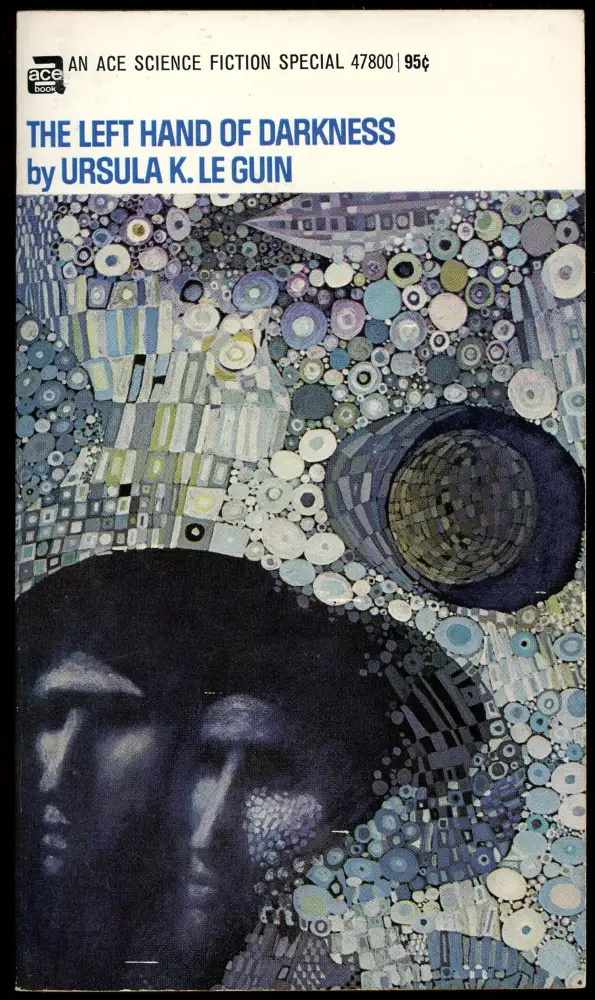
Cover by Leo and Diane Dillon
Genly Ai is an envoy sent to the snowy planet of Winter to convince the people to join the Ekumen (a sort of alliance between planets). Winter, or Gethen in their native language, is not as technologically advanced as the rest of the universe. They have yet to build airplanes, let alone a vehicle capable of space travel. Following an outsider’s perspective allows readers to learn about a new culture alongside the narrative main character.
As per my experience with her previous works, Le Guin excels at creating compelling and unique settings. Smaller, intermediate chapters offer folkloric stories from the planet of Winter to further enhance the reader’s understanding of Gethenian culture.
All the characters are human, though the Gethenians differ in one key way. They are completely androgynous except for once a month when they enter their reproductive cycle (known as “kemmer”) where they then shift into either male or female (as in they can either impregnate or become pregnant.) Which role a Gethenian will take on during kemmer is not predetermined and can change between cycles.
This confuses and occasionally disgusts Genly Ai, who regards all characters with he and him pronouns, perhaps because he is male and unable to empathize with or respect anyone who isn’t.
Without gender, Le Guin posits that there is no sexuality, no rape, no war. People who get pregnant are not treated as lesser. Children are raised by everyone, not just the person who gave birth to them. Jobs account for kemmer, giving time off for those experiencing their cycle, and special buildings are set aside for reproduction.
Contrasted with the world we live in today, this book subtly calls out the sexism of our own society, while also exemplifying how we may improve. I was pleasantly surprised by the feminist slant of this book.
Five stars.
Reflections in a Mirage, by Leonard Daventry

By Jason Sacks
Leonard Daventry is a British science fiction author whose work tends to follow standard pathways – until it doesn’t. As my fellow Galactic companion Gideon Marcus wrote about one of Mr. Daventry’s previous novels, Daventry likes to explore ideas of free love and complex relationships, using familiar set-ups with slightly surprising resolutions.
His latest book, Reflections in a Mirage, is an excellent demonstration of how Mr. Daventry takes on those challenges while delivering his own unique view of the world. Unfortunately, this novel is perhaps overly ambitious for its length. Mirage consequently falls short of the author’s clear goals.
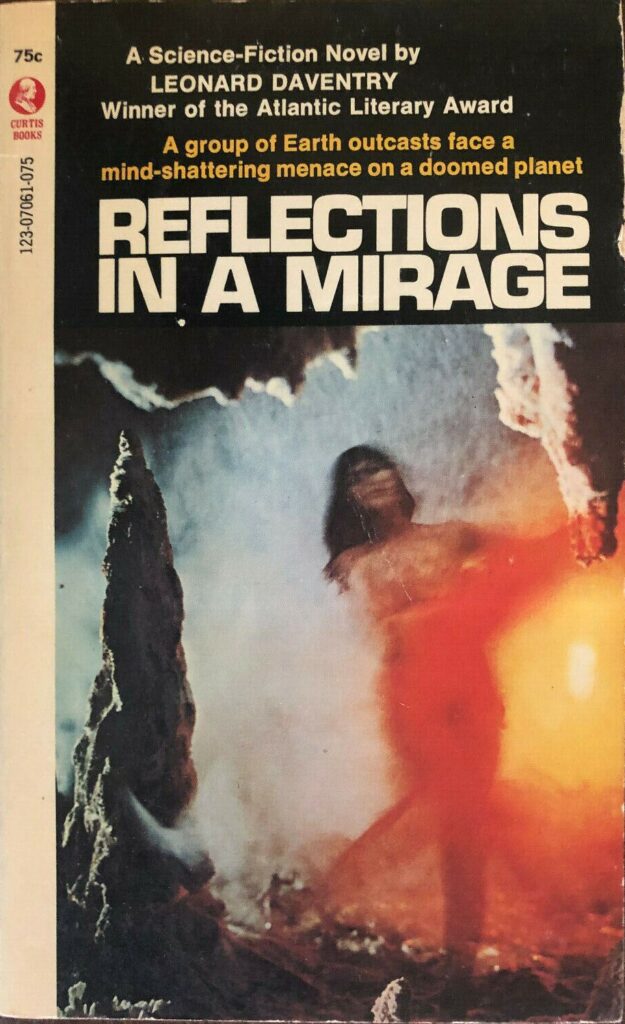
We return to the lead character Daventry established back in 1965 in A Man of Double Deed: Claus Coman is a telepath, a so-called “keyman” who can create connections to minds of both humans and non-humans. Coman is enlisted to join a motley band of outcasts and criminals who journey to one of the many worlds which humanity has discovered among the vast stars: a forbidding but intriguing planet called Sacron. Coman at least has the comfort of traveling with longtime companion Jonl, a woman with whom he’s had a complex relationship.
But just as many British exiles to Australia rebelled against their crew, the group of 50 outcasts rebel against the crew of their space cruiser. A violent, vicious battle kills most of the men who can fly the cruiser, and terrible damage is visited upon the ship. They only have one choice: to land on the planet which is ironically called Paradise 1. Paradise 1 seems to be a desert world, nearly bereft of any life whatsoever, but there are hints the planet may be more complex than it initially seems.
In fact, we get an intriguing revelation towards the end of the book (with a few concepts which will be well understood by Star Trek fans), but I found myself hungering for more context of the deeper story. At a mere 191 paperback pages, I was constantly under the impression that Daventry had to cut out important elements to the story; its brevity leaves the conclusion feeling a bit unsatisfying.
Reflections in a Mirage is at its best when it explores the human relationships it depicts. Coman’s relationship with Jonl is at the center of the story and provides a happy connection where so many of the other connections are tenuous. Daventry spends some time showing Jonl’s relationship with other women on the colony ship – the men and women are partitioned away from each other – and alludes to furtive, loving relationships among the women. There are similar hints about some of the men's connections to each other, and a strong implication that this society accepts a full gamut of sexuality, from polygamy to homosexuality and even to asexuality.
All of that is very interesting, and places this novel firmly in a “new wave” mindset, but there’s just not enough of it to satisfy. Ultimately, Reflections in a Mirage has the potential to be great, but I felt Daventry needed at least 100 more pages to fully illuminate his story.
You’ll probably be more satisfied reading some of the other works in this column. (I do recommend the LeGuin and Vonnegut books.)
3 stars

![[March 14, 1969 ] Left Hand of Darkness, etc. (March 1969 Galactoscope)](https://galacticjourney.org/wp-content/uploads/2024/03/690314covers-672x372.jpg)


![[March 10, 1969] Speed (April 1969 <i>Fantastic</i>)](https://galacticjourney.org/wp-content/uploads/2024/03/COVERHALF-672x372.jpg)



















![February 26, 1969] Springtime for Moorcock? <i>New Worlds</i>, March 1969](https://galacticjourney.org/wp-content/uploads/2024/02/NW-March-1969-672x372.png)


 Cover by Gabi Nasemann. Is this Moorcock horrified by his announcement?
Cover by Gabi Nasemann. Is this Moorcock horrified by his announcement?  Artwork by Mal Dean.
Artwork by Mal Dean.
 The magazine’s obsession with D.M. Thomas continues, with something given under the premise that it is a transcript of speech from Mr. Black, a schizophrenic, as he is treated. As the story progresses, in
The magazine’s obsession with D.M. Thomas continues, with something given under the premise that it is a transcript of speech from Mr. Black, a schizophrenic, as he is treated. As the story progresses, in 
 Bizarre artwork by Mal Dean, seemingly stuck in at random in the middle of this story.
Bizarre artwork by Mal Dean, seemingly stuck in at random in the middle of this story. Artwork by Mal Dean.
Artwork by Mal Dean. Continuing the war theme, now with poetry, this time from writer and reviewer MacBeth. His last prose piece was in July 1967. The Hiroshima Dream touches on themes that seem very Ballardian, so it seems a logical piece to follow Ballard. Death, destruction, dystopia….fifty tankas* all based around apocalypse and the nuclear bomb dropping at Hiroshima. Although it is shockingly dark, I prefer MacBeth to D. M. Thomas. 4 out of 5.
Continuing the war theme, now with poetry, this time from writer and reviewer MacBeth. His last prose piece was in July 1967. The Hiroshima Dream touches on themes that seem very Ballardian, so it seems a logical piece to follow Ballard. Death, destruction, dystopia….fifty tankas* all based around apocalypse and the nuclear bomb dropping at Hiroshima. Although it is shockingly dark, I prefer MacBeth to D. M. Thomas. 4 out of 5.


![[January 26, 1969] A New World Order <i>New Worlds</i>, February 1969](https://galacticjourney.org/wp-content/uploads/2024/01/New-Worlds-Feb-1969-672x372.jpg)
 Impressively startling cover by Gabi Nasemann.
Impressively startling cover by Gabi Nasemann. As expected, the usual nudity, not entirely related to the prose. Artwork by Gabi Nasemann.
As expected, the usual nudity, not entirely related to the prose. Artwork by Gabi Nasemann.
 Artwork by Gabi Nasemann.
Artwork by Gabi Nasemann.
 Table made up by J. G. comparing different writers. Notice the positioning of Pohl and Asimov and that of Burroughs (presumably William S., not Edgar Rice!), a sign of where this magazine seems to be going.
Table made up by J. G. comparing different writers. Notice the positioning of Pohl and Asimov and that of Burroughs (presumably William S., not Edgar Rice!), a sign of where this magazine seems to be going. Artwork by Haberfield.
Artwork by Haberfield. Artwork by John T. Sladek.
Artwork by John T. Sladek.
 Work by Mervyn Peake.
Work by Mervyn Peake. Artwork by Prigann.
Artwork by Prigann. Artwork by Prigann.
Artwork by Prigann.
 Artwork by Gabi Nasemann and Charles Platt.
Artwork by Gabi Nasemann and Charles Platt.
 An advertisement from this issue of Peake's better-known work.
An advertisement from this issue of Peake's better-known work.

![[January 14, 1969] Ten for the road (January Galactoscope)](https://galacticjourney.org/wp-content/uploads/2024/01/690114covers-672x372.jpg)












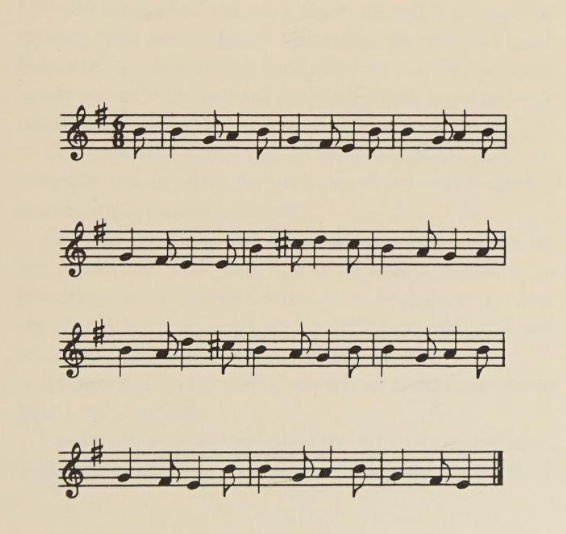




![[January 8, 1969] Young Punks and Old Fogies (February 1969 <i>Fantastic</i>)](https://galacticjourney.org/wp-content/uploads/2024/01/690108cover-672x372.jpg)


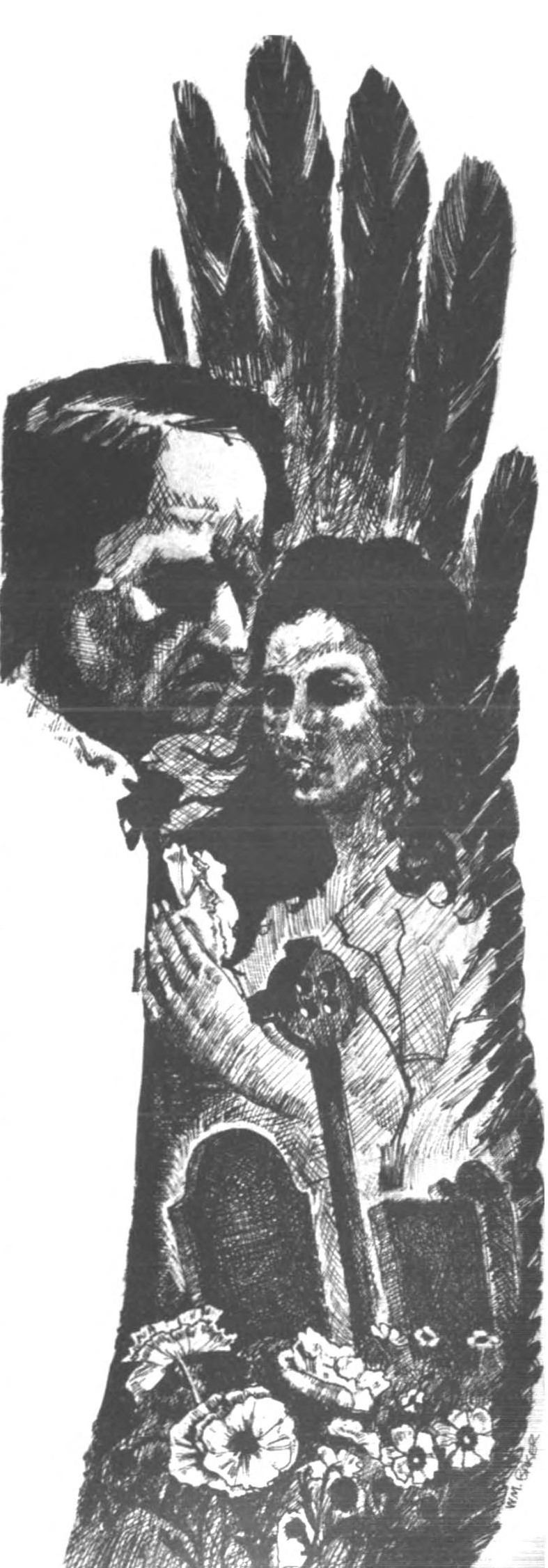






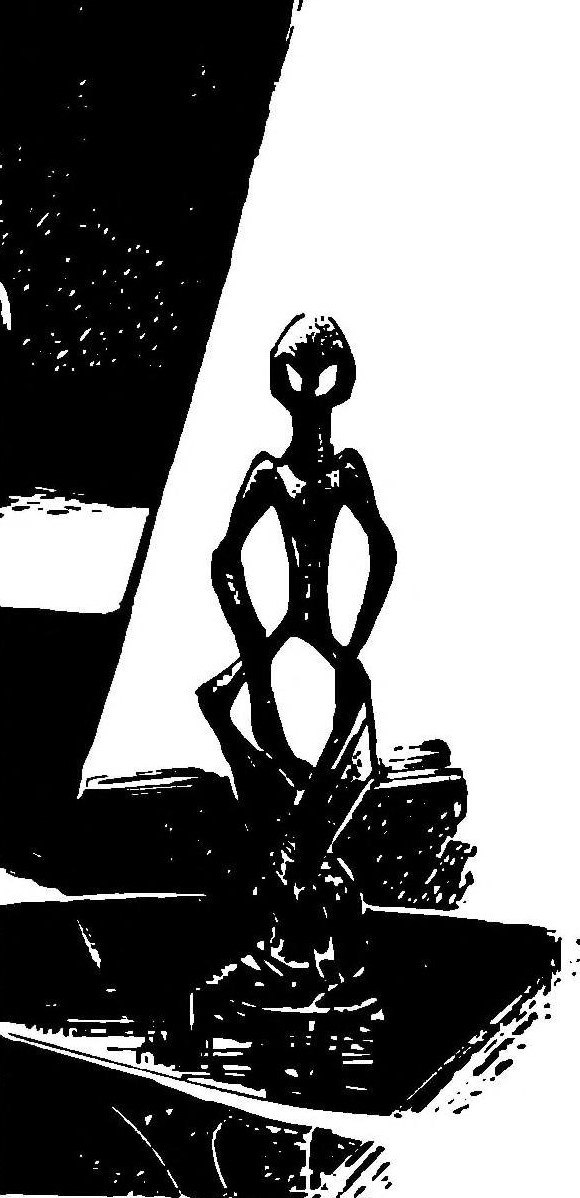

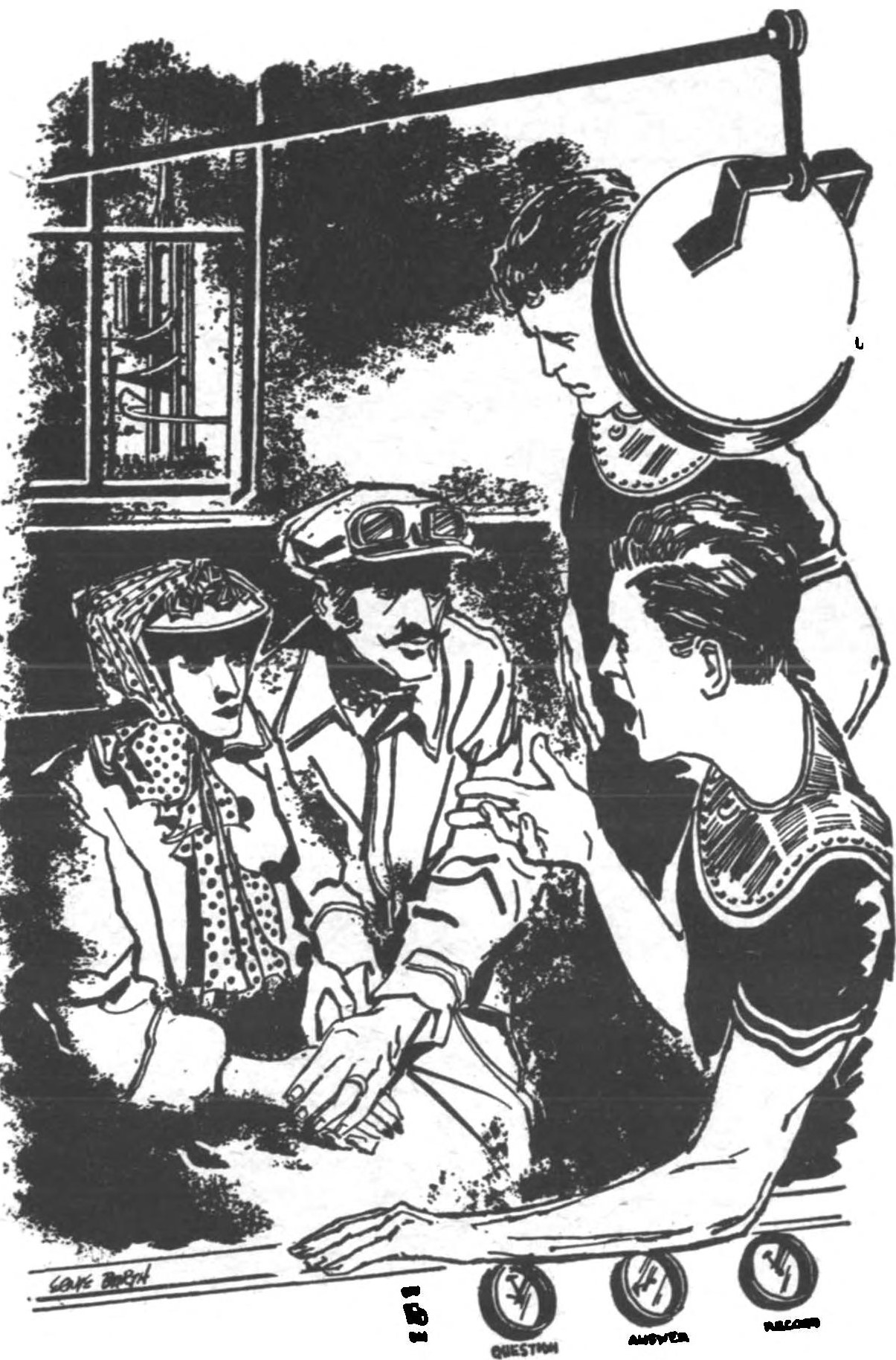
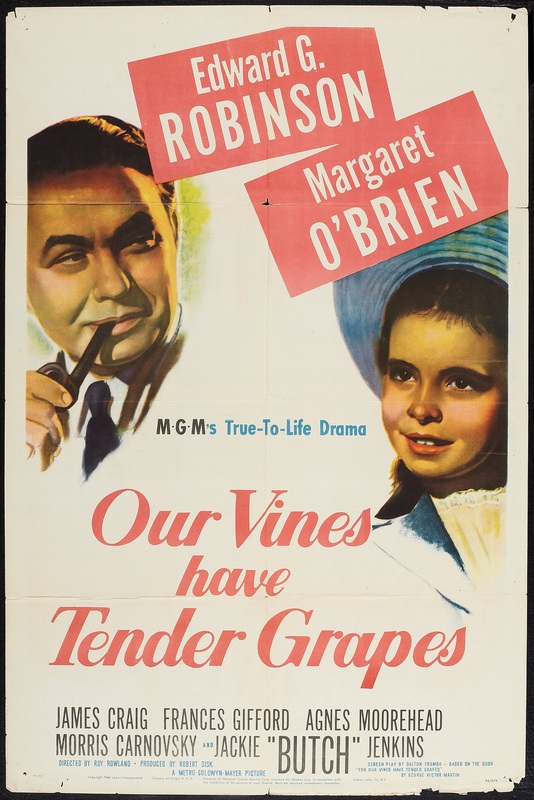
 Cover by Gabi Nasemann
Cover by Gabi Nasemann




 Just to be clear – New Worlds editors really like D. M. Thomas. As in, REALLY like. Declaring the poet to be “without question, one of England’s very best poets” in the Lead In, they like this particular poem so much it is available as a poster, courtesy of Charles Platt.
Just to be clear – New Worlds editors really like D. M. Thomas. As in, REALLY like. Declaring the poet to be “without question, one of England’s very best poets” in the Lead In, they like this particular poem so much it is available as a poster, courtesy of Charles Platt.

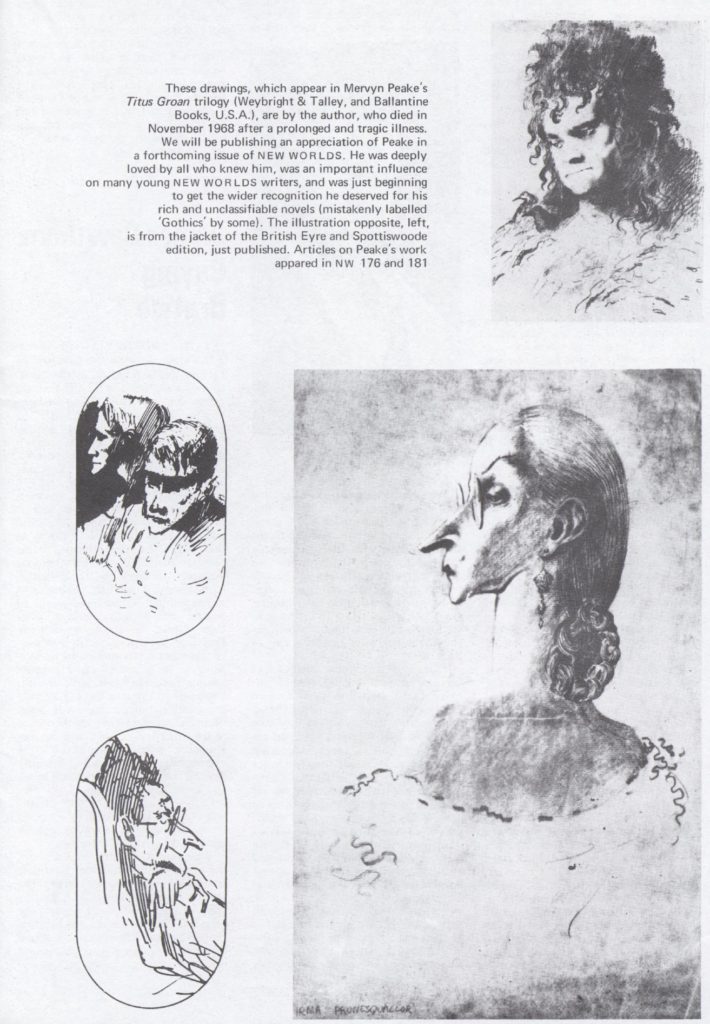
 On a more positive note, have a great Christmas, and I look forward to returning next year when (hopefully) I will be less grumpy. “Bah, Humbug!” and so forth.
On a more positive note, have a great Christmas, and I look forward to returning next year when (hopefully) I will be less grumpy. “Bah, Humbug!” and so forth.
![[November 26, 1968] Warhol, Delany, Cornelius and Perversity <i>New Worlds</i>, December 1968](https://galacticjourney.org/wp-content/uploads/2023/11/new-worlds-december-1968-672x372.jpg)
 Cover by Gabi Nasemann
Cover by Gabi Nasemann
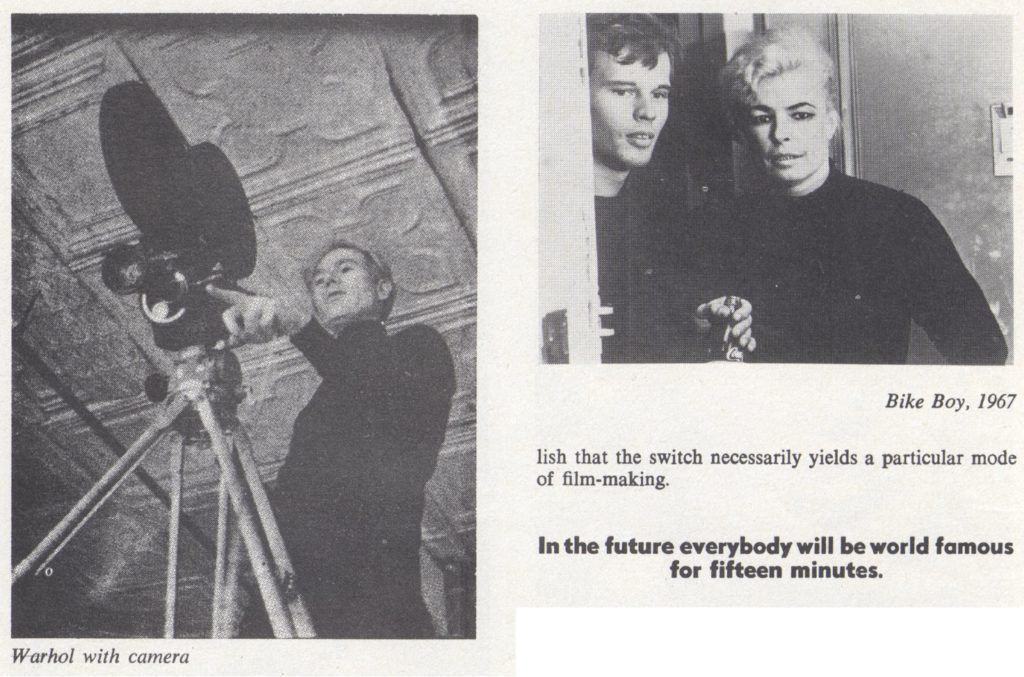




 Picture by James Cawthorn
Picture by James Cawthorn

 (And where would New Worlds be without a provocative photo or a mention of J. G. Ballard? This is an advertisement on the back cover.)
(And where would New Worlds be without a provocative photo or a mention of J. G. Ballard? This is an advertisement on the back cover.)
















![[November 10, 1968] Ratings (December 1968 <i>Fantastic</i>)](https://galacticjourney.org/wp-content/uploads/2023/10/COVERREDUCED-672x372.jpg)














